Josephine Wiegel shares evacuation experience, trauma
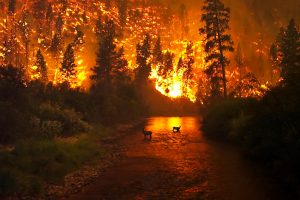
The Tubbs fire in Sonoma County blazed for 123 days, killing 22 civilians and singeing over 36,000 acres of land in northern California, 2017. Two years later, residents of the Santa Rosa area faced a similar threat: the Kincade fire, Oct. 23-Nov. 6.
Sonoma County civilians like Josephine Wiegel faced evacuations and emotional damage after the flames consumed their community.
Wiegel, a programmer analyst for the County of Sonoma information system department, lived in the Santa Rosa area for one year before the Tubbs fire swallowed up much of the surrounding community.
“Of my ten colleagues, four lost their homes completely [in the Tubbs fire] and fled by night losing all their valuables except for their vehicle and clothes on their backs,” Wiegel said. “When we returned to work, we had huge air scrubbers cleaning the air for a week so get the smoke out so that we can continue to work.”
Moving to Sebastopol after the fire endangered her and her family, Wiegel faced some of the same trauma when the Kincade fire began to spread and threaten the safety of Sebastopol residents in 2019.
Over 6,000 wildfires have left their mark in California, charring an estimated 198,392 acres across the state over the course of 2019. After experiencing the most destructive fires in its history in 2017-18, according to Cal Fire, thousands of California locals continue to evacuate their homes and communities.
The Camp fire of 2018 remains the deadliest and most disastrous California wildfire, killing over 85 Butte County civilians and devastating over 18,000 structures across its 153,336 acre outbreak. Extinguished on Nov. 25, 2018, the Camp fire is no longer a threat; however, northern California fires continue to endanger state residents.
When October rolled around in 2019, Wiegel and her Sonoma County neighbors experienced heightened levels of anxiety concerning the wildfires. When Pacific Gas and Electric Company (PG&E) began shutting down power to avoid the risk of a flame, many county residents fled to friends or family who had electricity.
In the following tweet, Cal Fire releases an update on the Foothills fire in Placer County.
#FoothillsFire [Final] Foothills Blvd x Athens Av, northwest of Roseville in Placer County.
· 355 acres 100% contained
· Evacuation orders and road closures lifted
· All CAL FIRE ground resources released pic.twitter.com/KqFXag2Vmq— CAL FIRE Nevada-Yuba-Placer Unit (@CALFIRENEU) November 26, 2019
After hearing of high winds directed at Sebastopol, Wiegel and her family cooked all the fresh vegetables they had and packed ice in the refrigerator to preserve food in case of a power outage. Packing a suitcase without much urgency, Wiegel debated whether or not to relocate with her two daughters, Marquesa Wiegel, 15, Theresa Wiegel, 14, two dogs and a cat to San Francisco to stay with her oldest daughter Priya Chander, 31.
“My daughter had come for the day and we were watching TV after dinner,” Wiegel said. “After that things got nervous and we found we had not prepared as well as we thought. Things were harder to find in the dark. My daughter left and asked that we follow immediately.”
Fresno City Fire Department fire captain, public information officer, and FC alumnus Koby Johns, ‘93, began his service in 2005. As the fire department works toward local and state safety, Johns recognizes that the issue will not cease overnight.
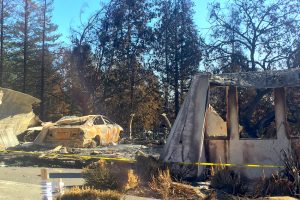
“This is a problem that has been years in the making and we aren’t going to turn around and fix it overnight,” Johns said. “It is going to be the new normal until we make changes. But we aren’t going to see the effects of those changes for some time down the road. We are paying for decisions now that have been made over the course of years.”
The Kincade fire in Sonoma County was sparked by a broken PG&E jumper wire, Oct. 23, according to USA Today. The fire spread over 77,758 acres in 13 days, forcing over 180,000 people to evacuate their homes. Now 100 percent contained, the Kincade fire remains the most destructive 2019 fire.
The power went out in Sebastopol and Wiegel realized she and her family did not have enough packed to evacuate. Stumbling around their house in the dark, the Wiegels crammed their belongings into their van and fled to Santa Rosa to fulfill an emergency call for the information system department.
After dealing with the crisis, the Wiegels headed back to their house in Sebastopol. Confirming that the area was not in immediate danger, the family decided to stay the night in their powerless home.
“When we got home we decided we had no power but we were not in imminent danger,” Wiegel said. “So we decided to go to sleep as it was pitch dark and hard to do anything without getting hurt. My daughter did not think this was a wise choice and I wish we had listened.”
Around 95 percent of California wildfires are caused by humans, according to Los Angeles Times. From fallen or broken power lines to sparks from vehicle equipment to arson, many of the fires in the state have been sparked by human activity.
Chemistry, physics, calculus, physical science and statistics teacher Scott Bucher attended the California Science Teachers Association (CSTA) California Science Education Conference (CSEC), Oct. 19-20. Attending the conference for over 30 years, this year, Bucher attended a seminar taught by Dr. Jon Keeley, a research scientist with the U.S. Geological Survey.
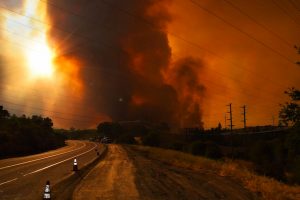
“One big thing I took away from this talk is that there are two separate types of fires in California,” Bucher said. “There are wind-driven fires in the south from the Santa Ana winds which burn the grass and the brush.
“Then we have fuel-driven fires which are the ones that are in the forests,” Bucher continued. “Winds contribute to the ones that take place in the northern part of the state, but it’s mostly the dead wood and trees in the forests that are fueling those fires.”
Dr. Keeley is stationed in Sequoia National Park, conducting research that focuses on the ecological impacts of wildfires as well as other aspects of plant ecology and plant physiology, according to the U.S. Geological Survey.
“There is no question since the year 2000 there has been a substantial increase in fires,” Keeley said. “Thirteen million acres burned since then and that is double the amount burned in the prior 20 years.”
Along with population growth and overpopulated urban areas, the drought in California, lasting from 2012 to 2018, killed native vegetation, fueling many of the fires. Dr. Keeley comments on the increased population and its effect on the wildfires.
“California has increased by six million people since the year 2000 and the worse fires have all been ignited by humans or human infrastructure,” Keeley continued. “By adding 300,000 people every year, we increase chances of a fire being ignited during one of our autumn extreme wind events.”
In the following podcast, junior Addison Schultz interviews freshman Kirra Obwald about the California wildfires.
The sound of a police siren woke the Wiegels up at 3 a.m., notifying them that Sebastopol was being evacuated. The family rushed to pack up and after 20 minutes, they were out the door, heading to pick up Wiegel’s 90-year old friend.
“I called a 90 year old friend of mine and asked her to start getting ready as we were going to evacuate,” Wiegel said, “and I would come pick her up. We packed in record 20 minutes and went to pick up my friend.”
With Wiegel’s family and her friend packed into the van, the group headed to San Francisco, normally a one and a half hour drive. However, with thousands of evacuees flooding the freeways, the group arrived in the city four hours later. After a day’s rest, the Wiegels decided to escape to Wiegel’s mom’s house in Fresno.
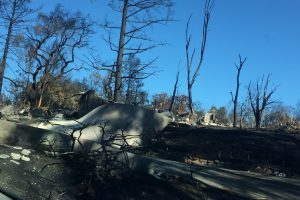
According to U.S. News, 21,442 schools have been shut down due to the California wildfires since the 2002-2003 school year. According to data from Disaster Days, wildfires caused over 3 million students to miss 21,442 days at 6,542 schools.
In 2018, the Camp fire led to the closing of the entire Paradise Unified School District for 154 days, causing the disruption of school for over 4,000 students in the school district.
The 2018 California wildfires affected FC field trip plans last year. Freshman Kirra Obwald’s eighth grade class’s Ronald Reagan field trip was pushed back about a month due to the Woolsey fire.
“It did kind of throw off our year a little bit,” Obwald said. “Our teachers had our assignments and everything lined up so that we were going to leave at the time we were supposed to and so having it pushed back, a lot of our projects got moved around a little bit unexpectedly.”
Two days after their arrival in Fresno, the Wiegels were notified that the power was turned back on in Sebastopol. The family packed up a third time, heading back home. Wiegel’s daughters’ school in Sebastopol was shut down for a week until the debris, ashes and smoke from the area could be cleared.
The Wiegels and many of their neighbors experienced PTSD in the form of anxiety, depression and nightmares in the weeks that followed their evacuation. Wiegel, like other Sonoma County residents, is currently planning on installing a generator and undergoing other disaster preparedness safeguards like clearing vegetation away from the perimeter and installing sprinklers on the roof.
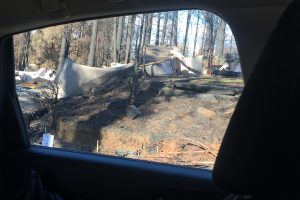
Utilities lead worker Cohen Van Noy works in the valves department for the City of Clovis. Van Noy encourages Valley residents to be aware of the fires in the surrounding areas, even if they do not directly affect them.
“[The fires] don’t really affect the city at this point,” Van Noy said. “If there were power outages that affected the city in these circumstances then there would probably be effects to the water system. There’s only so much backup power for water wells so there would probably be some direction on people using less water in order to accommodate that.”
According to the Los Angeles Times, the only current active fires in California are the Cave fire which is 90 percent contained, starting on Nov. 25 and the South fire in Tehama County which started on Sept. 5 and is 100 percent contained. State firefighters continue to battle the flames and preserve the safety of California.
As Wiegel looks back on her evacuation experience and prepares her family for future fire dangers, she considers the ways in which humans can reduce their carbon footprint and cease fueling the wildfires.
“Two of my daughter’s are vegetarian’s,” Wiegel said. “One has given up beef due to the amount of methane beef production contributes to the atmosphere. On a daily basis, we intentionally look at ways that we can reduce, reuse or recycle. Educating everyone is the first step in [fire] prevention.”
Want to help wildfire victims like Wiegel and her family? Check out this Mental Floss article on how to contribute to the cause.
For more articles, read EDITORIAL: Selflessness promotes communal growth, requires self-care practices and Disney+ launches, provides streaming alternative.
Addison Schultz can be reached via email and via Twitter @SchultzAddison.

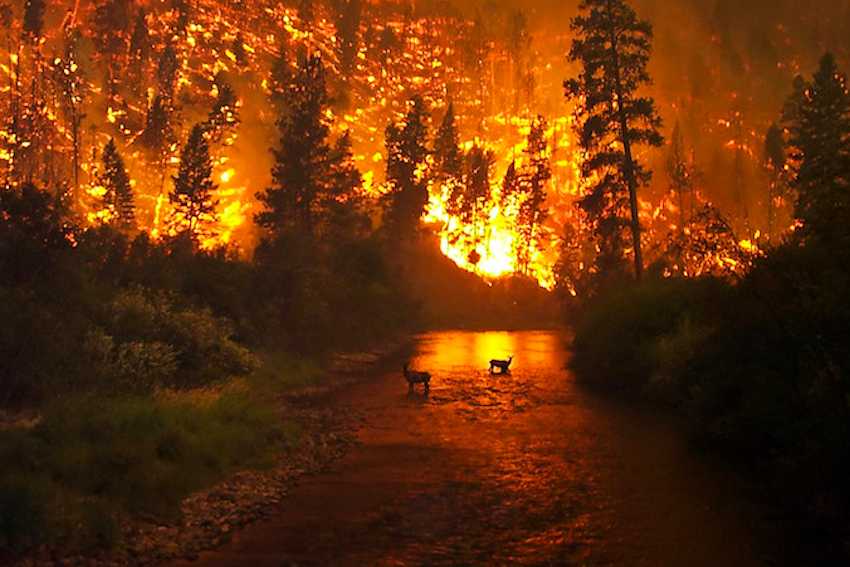

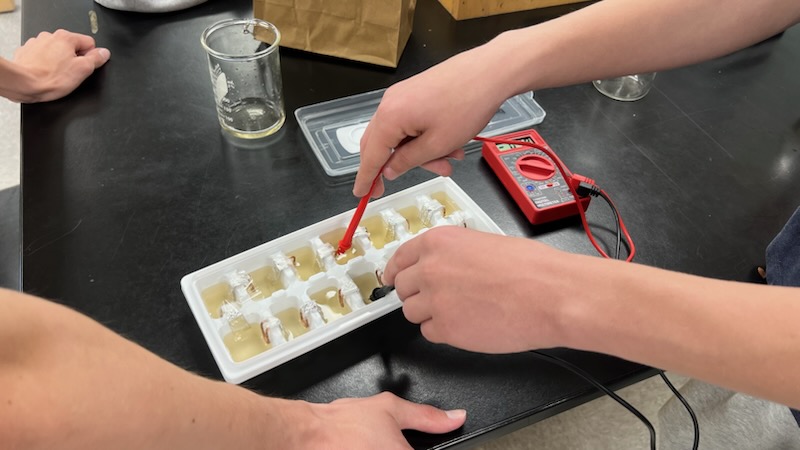
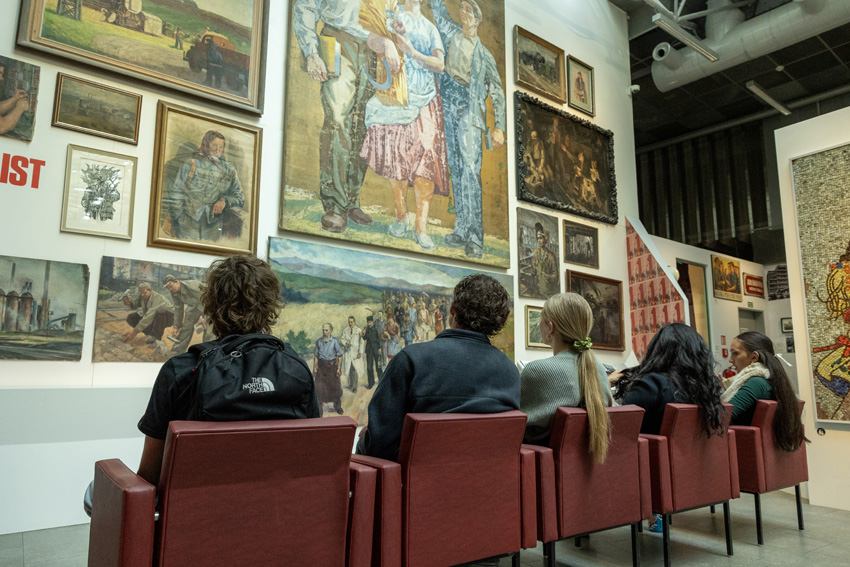
Hannah • Dec 5, 2019 at 10:29 am
Great article! We need to understand the impact of fires in our state.
Jewel Chandler • Dec 5, 2019 at 10:12 am
Awesome article! This is the type of awareness that people need to hear about the different causes of California wildfires and how they have created devastating issues for families in the surrounding areas. Its great to hear about some things we can do to help prevent the fires from spreading.